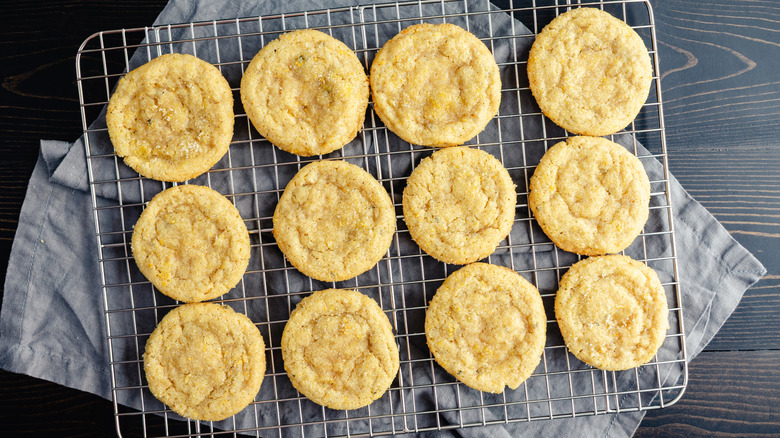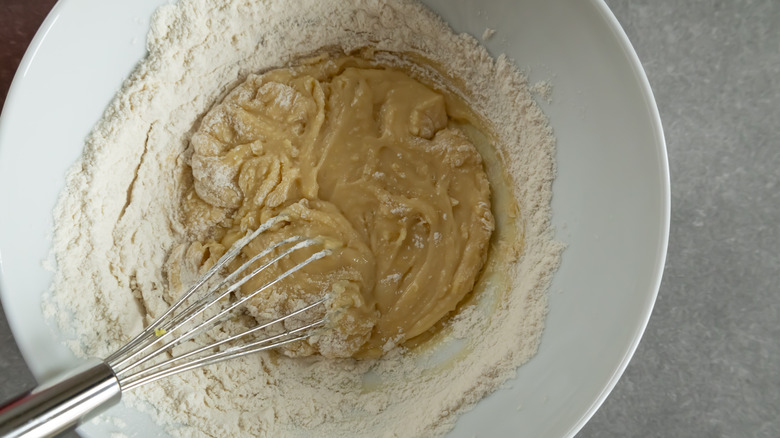How To Make Lemon Cookies Without Flour And Sugar
Cookies come in a wide range of flavors, textures, and shapes, but most recipes have a similar base. Conveniently shortened to the 1-2-3 cookie dough rule, the classic formula involves sugar, fat and flour, mixed together in that ratio. So if you want to bake a batch of lemon cookies without flour and sugar, and eliminating these foundational components can feel daunting.
Yet accommodating such modifications is entirely possible. So to help explain the necessary adjustments, Food Republic is fortunate for the advice of Odette D'Aniello — the CEO and baking expert at Dragonfly Cakes. To achieve a moist yet gluten-free cookie, D'Aniello advises turning to either almond or oat flour as alternatives. She notes that the former lends a "naturally moist, tender crumb because of its fat content" while the latter provides "light chewiness and a mild flavor."
When it comes to the sweet element, the options are more expansive. You can turn to familiar favorites like maple syrup and honey, while "coconut sugar, maple sugar, or date sugar are natural alternatives that bring depth," says D'Aniello. And to achieve the absolute smallest glycemic levels D'Aniello adds that "erythritol or monk fruit blends," can work, too. With a combination selected, tinker with additions like added fat for tenderness, egg for structure, and starch for airiness to achieve your desired consistency. D'Aniello's suggests that "a mix of almond flour, oat flour, and a touch of cornstarch," best replicate the wheat composition — but there's an appeal to different variations.
Adjust the cookie preparation for the ingredient substitutions
With so many possible combinations on hand, proceeding with baking can feel intimidating. Just like how a powdered sugar swap makes soft cookies, you'll need to account for new textures and flavors with these modifications, too. For starters, D'Aniello advises that nut flours and liquid sweeteners create cookies that "spread less and brown faster." So to accommodate, she urges to turn down the oven temperature around 15–25°F, then check doneness more often. If you used oat and or almond flour, expect baking to take more time. Meanwhile, with honey and maple syrup, she says to watch out for a raw interior — these sweeteners cause a moist dough. And regardless of which ingredients you use, first rest the cookie batter in the fridge as this "firms up the fats and reduces spreading," adds D'Aniello.
Flavor-wise, each sweetener type influences the cookies. D'Aniello explains that robust options like date, maple, or coconut sugar add caramel qualities, while taking lemon out of the spotlight. Meanwhile, natural syrups as well as low-glycemic alternatives let citrus notes take center stage. Remember you can always adjust with citrus juice, zest, or even a zest substitute to perfect the balance. And if using a nut flour, consider folding in an ingredient like almond extract to double down on nutty flavors. Each lemon cookie combination comes uniquely flavored; use trial and error to find your ideal mix.


